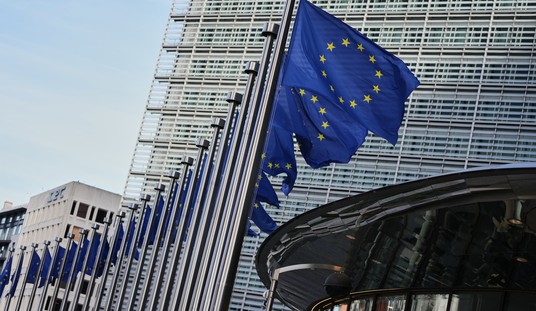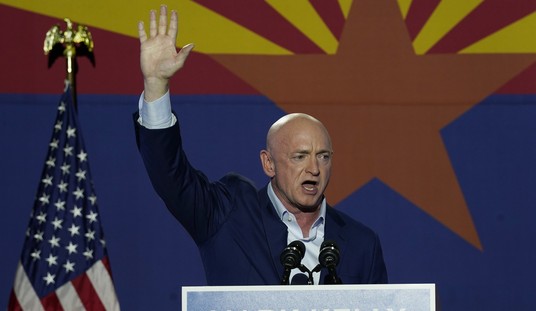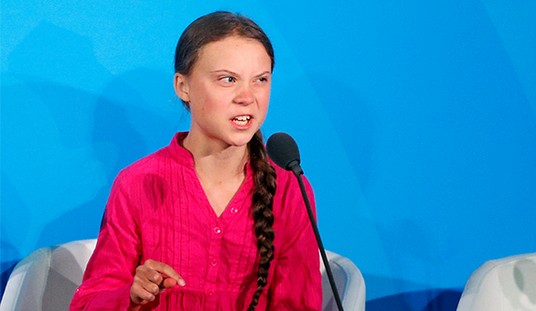In South Africa on Sunday, President Obama touted a “new model” of United States-Africa relations, vowing to help boost the continent economically, strengthen democracy, and etcetera.
One of the central components to this promise of improved ties was an ostensible plan to not simply continue to throw foreign aid at the largely economically beleaguered continent, but to “invest” billions of dollars in helping along Africa’s energy infrastructure and bringing electricity to more and more Africans, via The Hill:
President Obama promoted his new, multi-billion dollar “Power Africa” initiative to expand electricity access in Africa on Tuesday, calling it a benefit to Africans and the U.S. alike.
He spoke in Tanzania after touring a formerly idled power plant brought online with aid from the U.S. government’s Millennium Challenge Corp., as well as General Electric and Symbion Power.
“[T]his is a win-win. It’s a win for Africans – families get to electrify their homes; businesses can run their plants; investors can say if we locate in an African country, that they’re going to be able to power up in a reliable way. All this will make economies grow,” Obama said, according to a White House transcript.
“It’s a win for the United States because the investments made here, including in cleaner energy, means more exports for the U.S. and more jobs in the U.S.,” he said.
Here are some of the details from the White House’s official fact sheet on the plan, with the initial partner countries including Ethiopia, Ghana, Kenya, Liberia, Nigeria, and Tanzania:
Power Africa will bring to bear a wide range of U.S. government tools to support investment in Africa’s energy sector. From policy and regulatory best practices, to pre-feasibility support and capacity building, to long-term financing, insurance, guarantees, credit enhancements and technical assistance Power Africa will provide coordinated support to help African partners expand their generation capacity and access.
The United States will commit more than $7 billion in financial support over the next five years to this effort, including:
The U.S. Agency for International Development (USAID) will provide $285 million in technical assistance, grants and risk mitigation to advance private sector energy transactions and help governments adopt and implement the policy, regulatory, and other reforms necessary to attract private sector investment in the energy and power sectors.
The Overseas Private Investment Corporation (OPIC) will commit up to $1.5 billion in financing and insurance to energy projects in sub-Saharan Africa.
The U.S. Export-Import Bank (Ex-Im) will make available up to $5 billion in support of U.S. exports for the development of power projects across sub-Saharan Africa.
The Millennium Challenge Corporation (MCC) will invest up to $1 billion in African power systems through its country compacts to increase access and the reliability and sustainability of electricity supply through investments in energy infrastructure, policy and regulatory reforms and institutional capacity building.
OPIC and the U.S. Trade and Development Agency (USTDA) will provide up to $20 million in project preparation, feasibility and technical assistance grants to develop renewable energy projects. These efforts will be coordinated through the U.S. – Africa Clean Energy Finance Initiative (US-ACEF) and supported by the recently launched U.S. – Africa Clean Energy Development and Finance Center (CEDFC) in Johannesburg, South Africa. …
Hmmm. On the one hand, it is absolutely true that crushing energy poverty is obviously a hugely problematic economic barrier for Africa. It is impossible to match the level of economic productivity and living standards of the developed world when a huge chunk of your already meager cost of living goes toward energy, if you are even lucky enough to have energy access beyond inefficient and labor-intensive sources like candles, kerosene, charcoal, or firewood.
But on the other, much more questionable hand, I firstly have the gravest doubts that the Obama administration is going to use the lion’s share of this proffered money to elevate the proven routes to prosperity with inexpensive and efficient oil and gas energy, and will not instead be spending a lot of that cash on the romanticized renewable ventures that are having trouble taking hold even in the economically developed United States and Europe without skyrocketing energy prices. Environmentalists often have a deplorable tendency for trying to turn third-world countries into laboratories for their green ambitions while denying them the known means of affordable energy.
Secondly, merely building up energy infrastructure, using U.S. government incentives to spur private-sector investment, and helping out with regulatory and administrative duties might help alleviate some of the symptoms of Africa’s energy problems, but it not the same thing as curing the disease — i.e., why has there been so relatively little private-sector investment in many parts of Africa until now? Parts of this plan might be a start and the situation has been improving in recent years, but the political conditions — such as poorly enforced property rights, corruption, and patchy enforcement of the rule of law — that have deterred investment up until now are not going to be suddenly and magically solved by the United States’ monetary interference.
What’s more, this sounds like yet another convenient opportunity for the Obama administration to throw a bone to their cronyish business buddies while flying beneath the banner of a purely magnanimously charitable job well done, and largely out-of-sight, out-of-mind of regular U.S. consumers and voters.
General Electric will be perhaps the biggest beneficiary of that $7 billion in U.S. taxpayer funds that Obama says will underwrite Power Africa. The lion’s share of the $7 billion appears to be directed by the U.S. Export-Import Bank, which will “make available $5 billion in support of U.S. exports for the development of power projects.” This doesn’t mean that Ex-Im is spending or investing those $5 billions, rather the job of the Ex-Im bank is to help finance trading opportunities that private sector lenders are not willing to take a risk on. As Ex-Im describes its mission: “We assume credit and country risks that the private sector is unable or unwilling to accept. We also help to level the playing field for U.S. exporters by matching the financing that other governments provide to their exporters.”
G.E. CEO Jeffrey Immelt, who until early this year chaired the president’s Council on Jobs and Effectiveness, will clearly appreciate a financial backstop from Uncle Sam. Federal guarantees will reduce G.E. financial risks in Africa and will help it compete better against Chinese companies, which have been falling over themselves to invest in Africa.








Join the conversation as a VIP Member